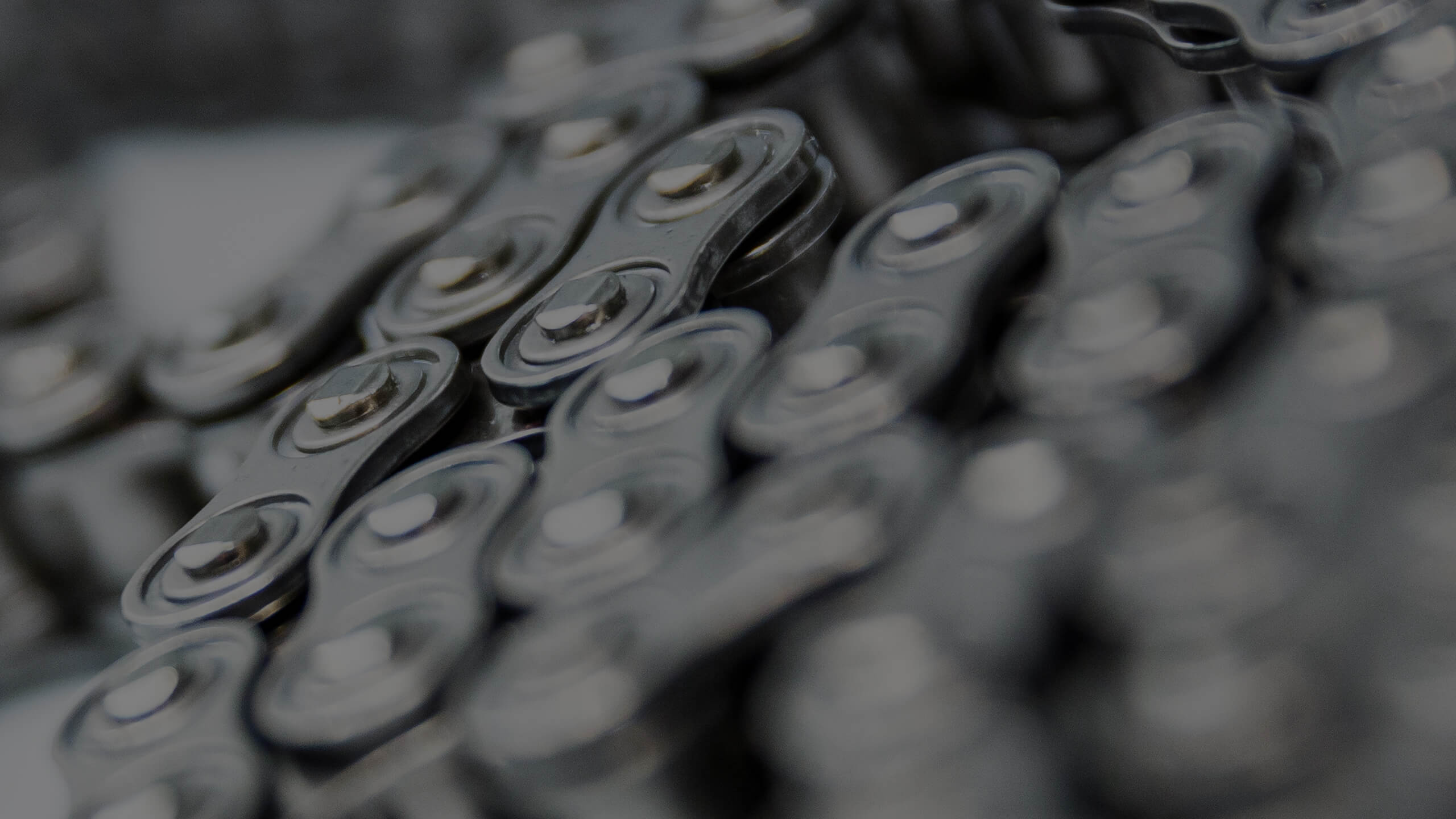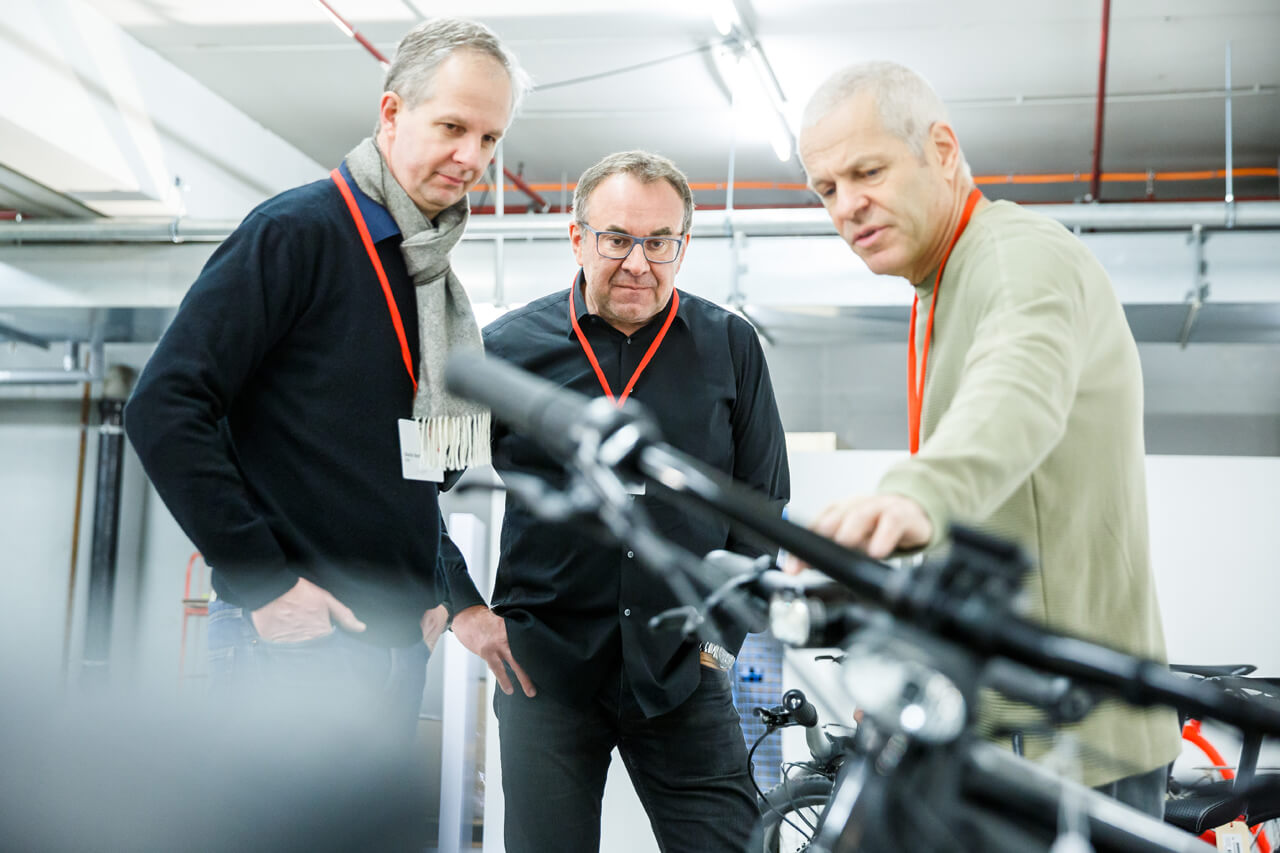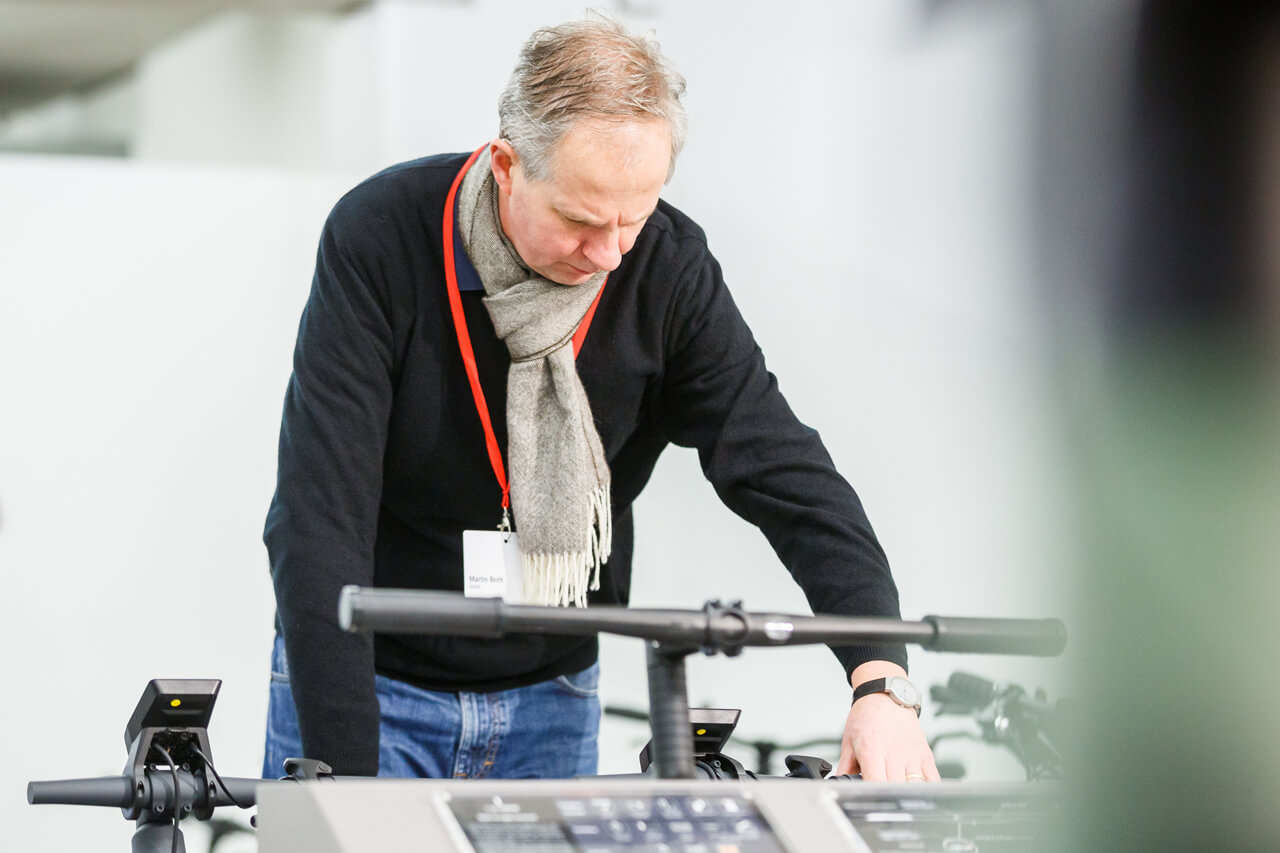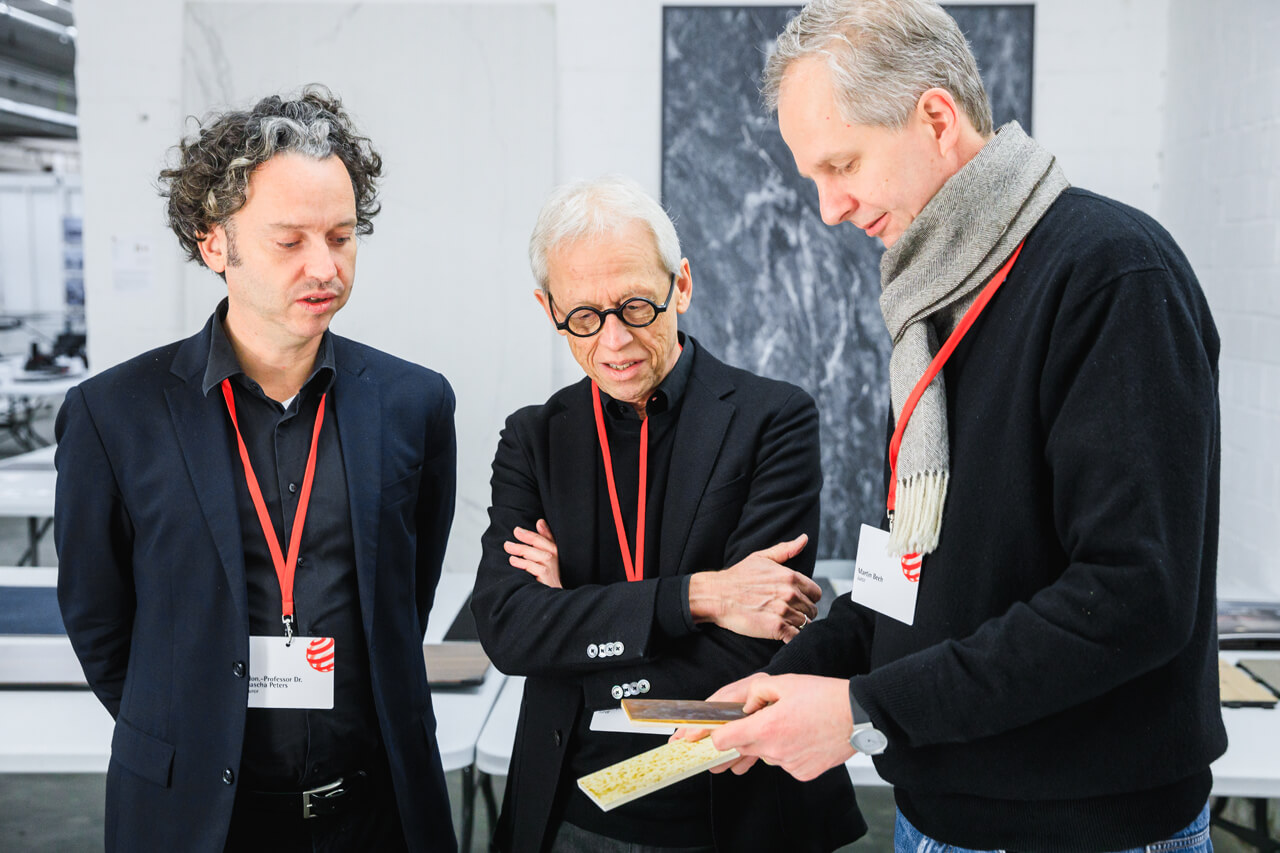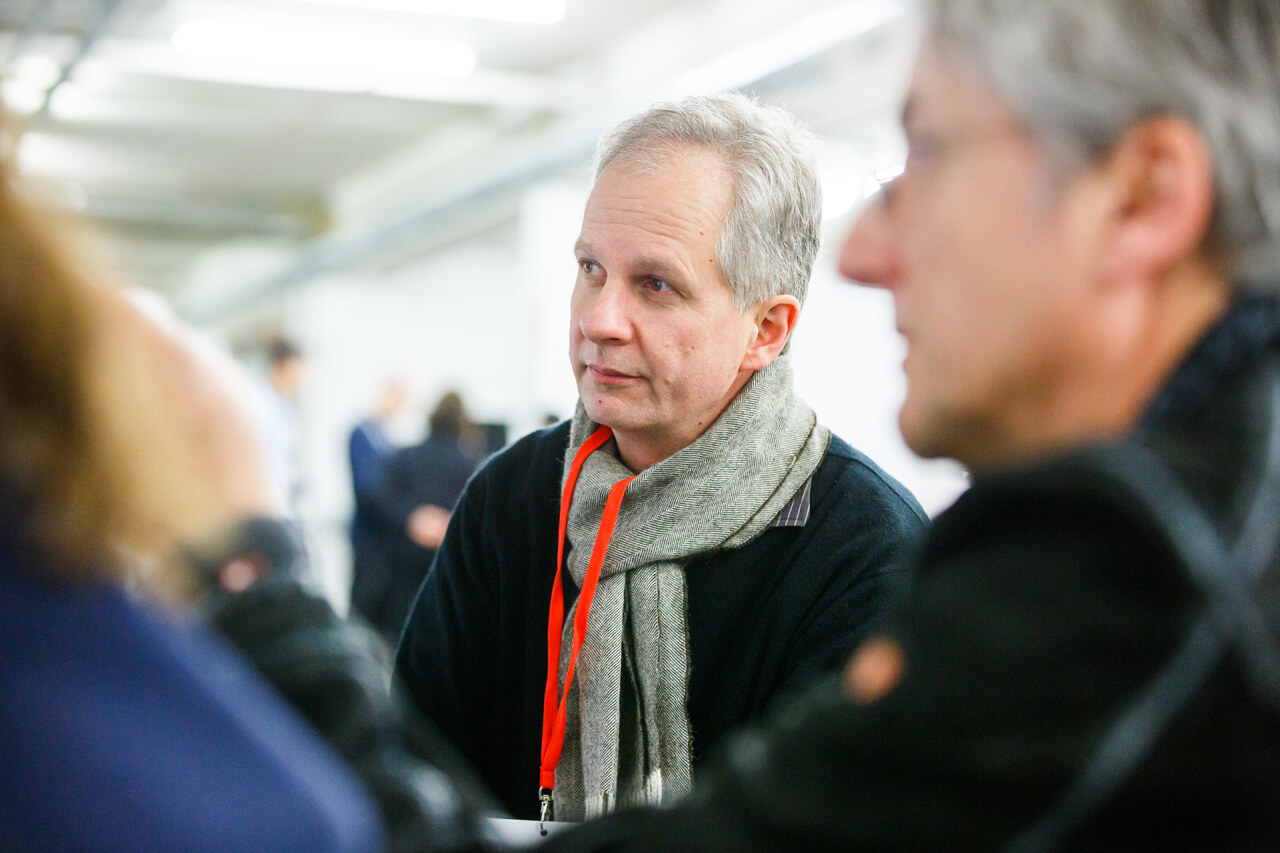The power of design: an interview with Red Dot juror Martin Beeh about antiseptic materials
The surfaces of everything from door handles, blades and touchscreens to cash or handholds all constitute a major factor in the spread of pathogens. Although it is not yet known how long coronavirus survives on an object’s surface, it is theoretically possible that people might become infected through contaminated materials. This is why their composition is hugely important in preventing the spread of the pandemic. Designers, product developers and scientists already make use of the antiseptic properties of materials like copper or silver. They utilise impressive and sophisticated processes to create surfaces that are hygienic, attractive and pleasant to the touch.
Red Dot spoke to Martin Beeh, founder of Cologne-based design office “beeh_innovation” and Red Dot jury member, about antiseptic materials and their areas of application as well as the look and feel of the surfaces. In collaboration with the NanoMikroWerkstoffePhotonik.NRW state cluster for North Rhine-Westphalia (NMWP.NRW), one of the specialist partners of “materials.cologne – Die Konferenz für Design und Innovation” design and innovation conference, materials expert Beeh explains how objects can be given germicidal properties and outlines his vision for the future of this important area of design.
Red Dot: What role do materials and surfaces play in terms of the spread of viruses?
Martin Beeh: Unfortunately, infected surfaces – and even entire materials – are often the unwitting transmitters of all kinds of germs. We are all quite familiar with antibacterial surfaces. The properties of materials such as cork or man-made composites like porcelain as natural disinfectants have long since been used in a targeted manner with unbelievable creativity. So now it’s time for materials to combat coronavirus!
In addition to surface coatings, the key factors to be considered are those that can be influenced, like the surface tension of materials for example. The lotus effect is probably the best known example. It keeps dirt off the surface but is not in itself resistant to bacteria.
What materials are known for their antiseptic properties?
We know about a whole range of metal alloys, such as silver, copper or stainless steel. Copper is a truly amazing metal. For example, using door handles and light switches made from copper alloys in hospitals or other sensitive areas makes it possible to reduce MRSA bacteria considerably. Objects that have copper surfaces or are even made entirely from copper substantially lower the risk of infection in general. However, copper oxidises very quickly and forms a verdigris patina.
Silver ions in items of clothing or on the internal containers in refrigerators have nowadays almost become lifestyle statements. Scientists have known about the antibacterial effect of silver itself for a long time. But there is still debate about whether a silver ion coating or silver threads have an effective positive impact.
What areas are these materials already being used in?
Antibacterial surfaces are used in lots of areas and are becoming more and more widespread. The best-known examples include antibacterial cutting boards, storage containers for foodstuffs, toilet seats, etc. Silver nanoparticles were used in certain deodorants or ‘anti-bacterial’ socks for a time, but caution is exercised on account of its ability to penetrate human cells.
What are the possibilities for giving objects germicidal properties?
Nowadays there are numerous effective processes for refining metal surfaces in order to give them more mechanical strength, to help them resist bacteria and viruses or to optimise plastic surfaces.
Processes like these were used in the “ROCKET” project, which stands for Regional Collaboration on Key Enabling Technologies, to develop antibacterial materials. The result was a ceramics-based composition of materials that kills bacteria such as MRSA for example. A company called itCoating from Gronau in Westphalia refined the product to create what it calls a ‘wipe-on’ coating. A microfibre cloth is used to apply the coating to a solid surface such as a door handle, door, handrail, table or public transport handhold. Once it has dried, this coating kills bacteria and viruses such as MRSA, influenza or coronavirus in just a few hours. The coating will withstand normal cleaning for several years.
Professor Gregor Luthe, who manages the “Antibacterial Materials” project, explained that surfaces can remain infectious with CoV-2 for up to nine days. The average person touches their face at least 23 times an hour, he said, resulting in far in excess of 3,300 potential contacts. The wipe-on coating permanently kills enveloped viruses and MRSA. He explained that this allows us to stop the spread of germs, bacteria and viruses effectively – including coronavirus.
And what are the special properties of the wipe-on coating?
Advances in technology and efficiency are always particularly fruitful when insights and ideas from different areas come together. For example, the antiviral and antibacterial effect of the coating can be significantly enhanced through a synergy of physics and chemistry. The extremely smooth functional layer, which is just a few micrometres thick, is pore free, meaning that even small viruses cannot attach to it. ‘Theta surfaces’ familiar to medical researchers generate an additional anti-adhesive effect in respect of micro-organisms thanks to their tailored surface energy. Furthermore, biocidal active ingredient components that complement each other are integrated in the coating to combat any germs that do manage to stick to the surface. This prevents contagious germs from contaminating surfaces, making a major contribution to interrupting the chain of infection effectively.
What other options are there to make materials antiseptic?
You can ‘functionalise’ objects by means of vapour deposition or enamelling, which involves coating the surface, or you can incorporate the corresponding effective materials directly in the main material, for example in plastics. The advantage of this method is that the entire product is antibacterial and there is no protective layer that may wear off over time. The “Antibacterial Materials” project involved the development of a starch-based filament, for example. The 3D printed objects made from this material all have antiviral, germicidal and antibacterial properties. Apart from that, the material is still compostable and does not create any microplastics.
What innovations are taking place in this area?
Irrespective of the approach used, the surface coatings are all processed further to improve functionality and resistance. Surfaces now also exist that filter the air in a room and reduce levels of contaminants, for example using photocatalytic effects. But other related issues that are resolved using materials and surfaces include anti-fouling and biocidal properties. For example, not only does reducing water resistance (caused by mussel growth) by means of ultra-thin and super-smooth functional coatings cut fuel and carbon emissions on boats, it also relieves our waters of hundreds of tons of biocidal microplastics each year.
And do these processes allow for the design of surfaces that are also aesthetically pleasing?
Mirrored sunglasses, coated by deposition, have become a pretty well-known fashion trend. ‘Dégradé’ effects can also be used for cosmetics packaging or food packaging. But sometimes you just want to change the functionality of the optimised surface without making this transformation visible.
What look and feel do the surfaces have?
The look and feel is an important part of the design, because it’s what makes surface techniques invisible yet perceptible. This is where the designers and surface technicians come in. Nowadays they can design surfaces very precisely, thus achieving subtle differentiation. This depends on the production process, the materials used and any surface finishing that takes place. In today’s world, consumers often only really understand and appreciate quality once they have been able to touch and feel the product.
What developments do you predict for antiseptic materials?
It is more important than ever that designers, marketing experts and product developers work together at the outset of a project to agree on the sensory experience of a surface that a product should give users. Apple recognised this from early on, as did those who paint Steinway pianos, let alone manufacturers of premium automobile or jewellery brands.
Topics relating to materials and surfaces make up an extremely broad field overall. Killing bacteria, viruses and germs is just part of it – though unfortunately a very important part at present. Developments in this field are fast paced, with the ‘anti-bacterial’ properties of some products appearing to be seen almost as a matter of course in some areas.
Wouldn’t it be great if the surfaces and objects in public spaces or public transport now viewed as unpleasant ‘virus distribution centres’ were to instead become automatically self-disinfecting thanks to the new ‘smart surfaces’ available? If there’s one thing you can be sure of, it’s that we will see a huge amount of useful innovations in this field!
